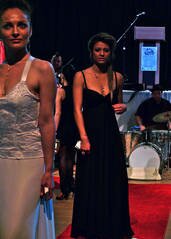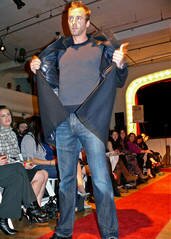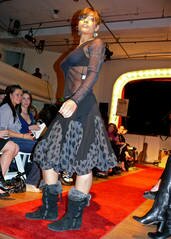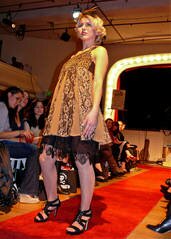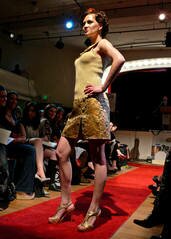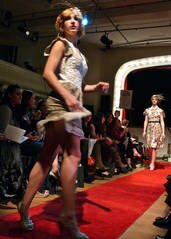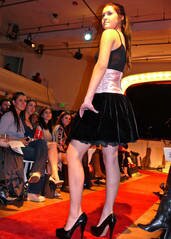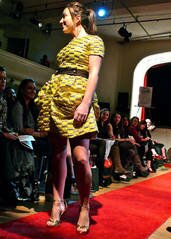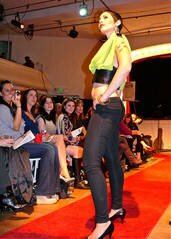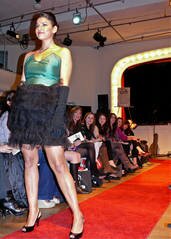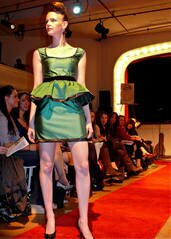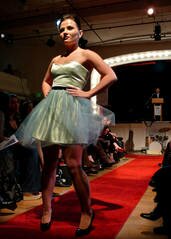Michael van Baker

About Michael van Baker:
Neighborhood: |
Capitol Hill |
Last Login: |
3 hours ago |
Joined: |
September 01, 2009 |
Profile viewed: |
2690 times |
Total Audience: |
361735 views |
| Editor & Publisher of The SunBreak | |
Storiesby Michael van Baker |
View by List | Grid |
 The Defense Video and Imagery Distribution System (DVIDS) alerted us that they've got some holiday greetings from Washington residents on duty for the Army and the Marines in Iraq, Afghanistan, and Kuwait. Two soldiers are from Yelm, one from Richland, one from Moses Lake, and one from Fort Lewis.
The Defense Video and Imagery Distribution System (DVIDS) alerted us that they've got some holiday greetings from Washington residents on duty for the Army and the Marines in Iraq, Afghanistan, and Kuwait. Two soldiers are from Yelm, one from Richland, one from Moses Lake, and one from Fort Lewis.
They've taped tiny little videos saying hello to the home front; if you're from the area, you can send an E-card back by visiting the video page.
It's also Veterans Day, and while some things are open and some are closed, some businesses are giving back. Veterans can enjoy free meals, free car washes, free music, and free museums and parks. Veterans who get hungry on the go can pull into a Dick's Drive-In, flash their military ID, and order a free hamburger.

The Boeing Company has called a halt to test flights of its 787 Dreamliner, after an electrical fire "affected the cockpit controls and the jet lost its primary flight displays and its auto-throttle," reports the Seattle Times. The plane made an emergency landing in Laredo, Texas, with 42 people on board.
A lot depends on the cause of the fire, and whether it was a simple equipment malfunction or was the result of a more serious design flaw.
Either way, says the New York Times, "[s]everal analysts said they doubted that Boeing, which is counting on the jet to vault past in total sales, would meet its deadline to deliver the first 787 by next March."
Every story in the media takes the opportunity to mention that the Dreamliner is almost three years behind schedule at this point, thanks to Boeing management's attempt to outsource the company's supply line. Multiple issues with Italian manufacturers and even a problem with the work of the venerable Rolls Royce engine-makers have thrown the 787's ship date drastically off schedule.
In hindsight, you can see that Boeing executives traded a situation in which they had quality assurance but uncertain costs, for one with much more variable quality assurance and costs. It's ironic that Boeing, steaming over a two-month strike delay in 2008, made such a public show of siting a new 787 assembly line in South Carolina. Where will they site a new corporate headquarters now that it's clear the old one is the driver of decisions that now threaten the company's future in commercial air?
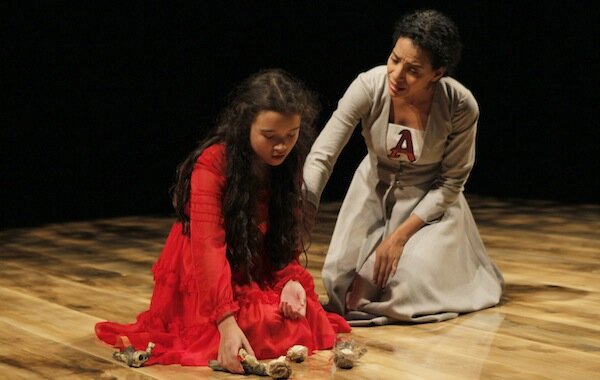 Izabel Mar as Pearl and Zabryna Guevara as Hester (Photo: Chris Bennion)
Izabel Mar as Pearl and Zabryna Guevara as Hester (Photo: Chris Bennion)
"I learned about my family in bits and pieces," playwright Naomi Iizuka said in an interview. "There are things that still peek out in the telling, like my father's sister will tell me something he neglected."
Similarly, you only get bits and pieces of Hawthorne's story in her play The Scarlet Letter, showing at Intiman Theatre (through December 5).
Audiences I think would be better served by knowing that Iizuka's work is to Hawthorne's as Kaufman's Adaptation is to The Orchid Thief. (Except that Iizuka's adaptation runs just over 70 minutes; you've hardly sat down, it seems, when everything is all done.) In both cases, the adapting author has introduced a significant personal element into the source. Here, that includes a paraphrasing of that "bits and pieces" line by the adult Pearl (Renata Friedman) who introduces and narrates the proceedings.
It's not a satisfying reworking, in that it hardly improves upon the original, and never makes a bold claim for its new existence--just like the little Pearl in the play who would like to be noticed but doesn't realize the attention the town fathers pay her is not for her sake.
Rather than a Puritan costume drama, what you see is a sort of memory play--part imagination, part hallucination--in which Pearl tries to recover her father, and make peace with the choices her mother made. (Tangentially, I direct you to Susan Faludi's "Feminism's ritual matricide.") Where Hawthorne's story is driven by Hester's conflict with Puritan society, Iizuka's play is not driven much at all, though it pretends to be (by a repressed memory that arrives right on cue).
Peter Ksander's beautifully austere set, lit by Justin Townsend, features a wooden square backed by a row of white birches that immediately suggest bars. There's also a wooden scaffold, in which the disgraced Hester (Zabryna Guevara), babe in arms, faces down her would-be tormentors, railing loudly in defiance, and refusing to name the father.
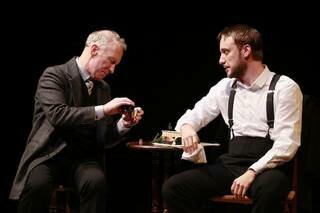 R. Hamilton Wright as Chillingsworth and Frank Boyd as Dimmesdale (Photo: Chris Bennion)
R. Hamilton Wright as Chillingsworth and Frank Boyd as Dimmesdale (Photo: Chris Bennion)
Director Lear deBessonet supports Iizuka's disjunctive adaptation--in which people with the names of Hawthorne's characters appear and have abstracted, present-day conversations and conflicts--by having the townsmen (Mark Anders, Jose Gonzales) play townswomen, too. They gossip and criticize Hester, sometimes comically. (The presence of a roving violinist, Emily Holden, is unexplained, but the music is nice.)
Iizuka's language, too, has little in common with Hawthorne's novel. Here's one of Hawthorne's righteous battle-axes:
This woman has brought shame upon us all, and ought to die. Is there not law for it? Truly, there is, both in the Scripture and the statute-book. Then let the magistrates, who have made it of no effect, thank themselves if their own wives and daughters go astray!
Iizuka's townswomen might call Hester a hussy and whore, but they are bitchily impotent, and register less and less as the play moves along. It's only when they aren't there (a scrim falls) and disembodied voices insult and attack Hester, that their wounding presence is recast in a way that retains the sense of danger.
But otherwise, the dramatic stakes are reduced, again and again, in episodic "bits." Hester argues with her once-lost husband Chillingworth (R. Hamilton Wright) as if he's an almost-ex who won't sign divorce papers, adult Pearl challenges Hester about being a cowardly, codependent woman, and young free-thinking Pearl (Izabel Mar) spouts off at every turn to everyone. When she and Hester get hauled before the town fathers, it feels like a parent-teacher conference indictment of single moms. In an exception, Chillingworth's preying on Pastor Dimmesdale (Frank Boyd) is grimly sublimated aggression, and its pathological nature culminates in a startling fever-dream image.
Photo: Flickr pool member nate.gowdy
From arts and advocacy groups, to homeless encampments, the pressure is on to find a secure niche in the new economy. Earlier this week, Mayor McGinn wrote on his blog that the fire department was putting new restrictions on the use of Building 30 at Magnuson Park, reducing the number of events that can be held there to four from over 30.
A wide range of groups rent the hangar for larger public events--Friends of the Library Book Sale, the Arboretum Foundation Plant Sale, Best of the Northwest Craft Show--so the Mayor is suggesting that the city use $8.5 million in "MOHAI money" for a renovation of the space:
Parks estimates that, for $8.5 million, they can renovate building 30 to keep the hangar open for community events and can renovate the west wing for artist work space. This will bring in almost half a million dollars in annual revenue to Parks that they would not otherwise have. It will protect the $121,000 in event space rentals and will generate an additional $350,000 from work space rentals in the west wing.
The groups in question certainly agree. The vast majority of the post's 150 comments cheer the idea, which I think makes it the single most popular idea the Mayor has had since taking office. Now the public opinion screws will be turned on the City Council, who may find themselves forced to agree with the Mayor on something--or not.
The McGinn administration's other big idea, to find a "permanent" place for the city's roving homeless camps to stay, is not nearly as crowd-pleasing, but McGinn has at least left tonier Seattle neighborhoods relieved with his selection of SoDo's former Sunny Jim factory as a possible camp site. (Ballard is having trouble getting its mind around a homeless hygiene station because it will attract homeless people.)
Currently, the homeless of these tent cities face regular eviction, and it's one of the great shames of Seattle that the situation has continued for so long--the moral poverty of those who despise the homeless on a variety of grounds, or simply refuse to spend the time considering hard realities, far outdoing the physical poverty of the homeless.
For a compelling glimpse of moral poverty--I warn you that the filth and degradation of these poor souls may shock you--see the Seattle Times comment section on McGinn's selection of SoDo, populated by people who seem to believe that the thrill of tent camping year-round in Seattle is the most salient driver of homelessness.
"Experience tells us getting someone housed is the fastest and most effective way for a person to become self-sufficient," writes McGinn. "Unfortunately, we have not been able to keep up with the demand." (Not in this economy, no.) "We would seek a nonprofit or other organization to manage the encampment, providing services to residents and data to the City."
I think it's safe to say the plan is spend something less than $8.5 million on "renovating" the camp site.
 Pacific Northwest Ballet principal dancers Karel Cruz and Carla Körbes in Twyla Tharp’s Waterbaby Bagatelles, presented as part of ALL THARP, Nov. 5-14, 2010. Photo © Angela Sterling
Pacific Northwest Ballet principal dancers Karel Cruz and Carla Körbes in Twyla Tharp’s Waterbaby Bagatelles, presented as part of ALL THARP, Nov. 5-14, 2010. Photo © Angela Sterling
"Cruz lifts Körbes, and then she pivots on his hands, as if about to launch herself forward into the water, and you desperately wish you could rewind that again and again," is what I wrote in my review of PNB's "All Tharp" over the weekend. So PNB's Gary Tucker did the next best thing, and sent five photos of the moment along. Click on the photo to be able to choose a larger version, but either way take a moment to let the inventiveness of Tharp's choreography embed itself in your brain. I don't know that there are any studies proving you'll be more creative as a result, but it can't hurt.
I didn't get to the Crocodile on Friday night until about ten, but since the show didn't wrap up until almost one a.m., there was still plenty to hear, culminating in the hybrid vigor of the John Roderick/Mugison pairing. The two husky, bearded men (see above) took to each like long-lost brothers, and their set felt more like two Norsemen rattling the rafters than guests sitting in on each others' songs. "I have had so many of you in my ear," said Mugison before the show, "I don't feel like I'm coming to do a gig, more like I'm coming for a reunion."
It was a sort of miracle of chance that the artists sparked so entertainingly, because the show (previewed here with YouTube clips), "Sister City Showcase: Reykjavik Calling," gave everyone involved just hours to meet, learn song parts, and perform.
It was presented by KEXP-FM (Kevin Cole, right, KEXP's senior director of programming, emcee'd) and supported by the City of Reykjavik, the Seattle City of Music Festival, Icelandair (now nonstop from Seattle to Iceland) and Iceland Naturally.
 A plenipotentiary from Iceland's embassy in Seattle (also right, but I was too busy getting the picture to get the name) even appeared, to explain that from his first visit to Seattle on a wet, gusty, wintry day, he felt right at home. Having experienced Reykjavik in October, I can tell you the reverse is true.
A plenipotentiary from Iceland's embassy in Seattle (also right, but I was too busy getting the picture to get the name) even appeared, to explain that from his first visit to Seattle on a wet, gusty, wintry day, he felt right at home. Having experienced Reykjavik in October, I can tell you the reverse is true.
In fact, if you didn't know the people involved, you might have been hard-pressed to tell the Icelanders from the Seattleites, as the following pictures will perhaps illustrate. I missed the first set of Nathan Wade and Pétur Ben, but there was still a line down the block of people braving the lashing rain to get into the show. Inside, the crowd was elbow-to-elbow, and I had to gradually salmon my way forward far enough to get a few shots.
The Maldives' Jason Dodson singing "Muscle For The Wing" (Lay Low, Lovísa Elísabet Sigrúnardóttir, was accompanying). Each artist had time for just a few songs; Lay Low's set had a meditative, alt-country feel.
Then Rusty Willoughby and Visqueen's Rachel Flotard teamed up to sing from his Cobirds Unite album. Its moody roots music appeal was in keeping with the theme of the night, if not necessarily the mood of everyone crammed into the Crocodile.
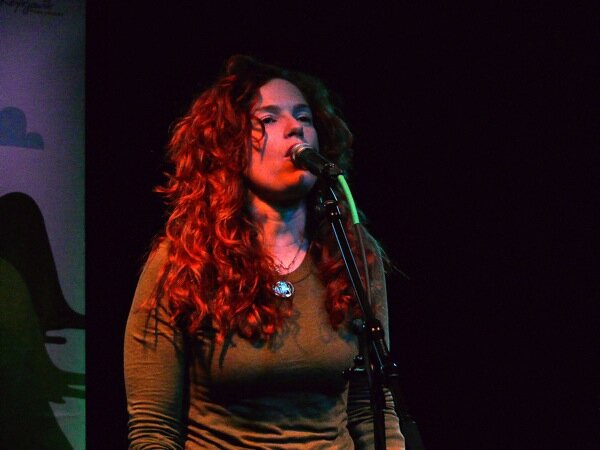 You haven't really lived until you've heard Willoughby and Flotard's mingled vocals--it's a throwback combination, from a time before processed sound.
You haven't really lived until you've heard Willoughby and Flotard's mingled vocals--it's a throwback combination, from a time before processed sound.
The always photogenic and companionable Flotard chatted up the crowd between songs, and teased their "adopted" bandmate-for-the-night Sin Fang Bous.
"I don't know how to play the piano," deadpanned Sin Fang Bous' Sindri Már Sigfússon, before sitting down to do just that. He warned us he might just do his comedy act instead of play. One thing is for sure, judging from the randomly shouted acclaim: he can have his pick of drunk girls at the Crocodile.
Sindri then retreated to behind a Cerberus-headed mic set, which like the mythical creature only occasionally sprang to life all at once. The reverb mic woke up for his second song, allowing him to add a ghostly echo to the middle mic's vocals.
The Long Winters' John Roderick and Eric Corson got paired with Mugison, as I mentioned. Roderick was sporting some fancy red suede shoes I don't think I got a good shot of, and was gifted a new Icelandic-style sweater that he donned for a song before admitting it was way too hot.
Corson was on drums and a keyboardy device even though he's supposed to be a bassist. Here he's doing back-up vocals, too. Talk about a one-man band.
That's Mugison in the extra-fly suit, Roderick on keyboard. The crowd voted for organ sound #2. I remember Roderick sang "Nora," but I can't recall now if he was on keyboard or guitar for that one.
A jovial Mugison. Sample exchange. Mugison: "People say we look alike. I feel like I've met my brother from another mother." Roderick responds to the effect that you never know who's related to who. Mugison: "My father was a sailor." Roderick: "Well, my father's a lawyer, so that'd better be the last fucking thing you say about that."
Mugison can sing blues like the bastard son of Joe Cocker and Van Morrison; he's not as twitchy as Cocker, but is in constant motion, and coaxes a surprising range from a gravelly voice. From Van Morrison he gets belly-felt rhythm. From both, emotional investment.
Then, just when you're ready dance into the mystic, he channels a death-metal demonic foghorn that seems to be summoning rocks to smash ships. His speaking voice is completely different.
Mugison and Roderick demanded everyone get back on stage for a closing, unrehearsed song. Pétur Ben was ready to roll with it, but Sindri looked like he was being punked: "Stand By Me"? Seriously?
Lay Low and Pétur Ben were a) delighted and b) cool with it.
Mugison = cat that ate the canary.
Big "Stand By Me" finish. No need for an encore. This shit is done.
Last Thursday's "Chai Couture," the fashion showcase for Jewish clothiers and designers, was also sponsored by Jconnect as a social occasion and benefit--which was a sold-out success. All proceeds went to support Sviva Tomehet's microloan programs for women in Israel. To supplement my photo gallery of the "Chai Couture" runway show, here's a look around Washington Hall before and after.
That's designer Cameron Levin checking out the sightlines from the corner of Washington Hall during a pre-runway show rehearsal.
Eli Rosenblatt Band supplied the Afro-Cuban music.
Runway models are great, but what about while people are waiting for the show to start? See the women above, who circulated throughout the Hall, looking fabulous in Katarina Yedidim's designs.
Liberty Bar's Andrew Friedman is on the left. I didn't know who the other people were but as Andrew's unofficial paparazzo, I wasn't going to take any chances on missing an important shot. UPDATE: I'm told (by Katarina, correcting my mistake) that that's designer Katarina Yedidim in middle.
Flamenco star and teacher Ana Montes danced her way into the runway show, wearing Cameron Levin's dress.
Afterward, it was time to line up and get shots of the whole collection from Marge Designs/Rita Gruzman. I'm all about the earth tones, as you know.
But wait, there's more! If this was appearing on Broadway, I would go see it.
The third model from the left realizes how important it is to make yourself stand out by doing something a little different, pensive. I am not what you'd call a professional fashion photographer, but to me that look is just "Oh!"
This is Cameron's crew. You can follow her fashion writing at Seattlest, or visit Cameron Levin Couture for more sassiness.
Even the chairs were good-looking.
Friendship. Fashion. Fame. The 3 Fs.
This woman was not modeling anything that I know of, but if you see her, ask her what she uses on her hair* because it's a honey blonde so shiny and sleek your eyes will squeak as you walk past. UPDATE: Ah, she was modeling for Jarbo, and that's the work of Reign Salon in Columbia City, who donated the time to do the hair for 50 models.
*No, really, I'd like to know. I spend a lot of money on hair product that promises to transform my coarse, straw-like hair to pure silk.
An evening with Twyla Tharp is worth making plans for, even if it's a vicarious accompaniment, through the medium of her dance works.
The three pieces on Pacific Northwest Ballet's "All Tharp" program (ends November 14) this time are Opus 111, Afternoon Ball, and Waterbaby Bagatelles, and it feels a bit like dinner date that begins with a walk through an autumn forest declaiming Keats, includes dinner at a dangerously chic nightspot with a window-view of the street, and ends with flipping through candid snaps of an Olympics swim team clowning and flirting in between meets.
Depending on which night you go, there's a special treat for PNB fans, given her impending departure at the end of the season, to see Ariana Lallone in one or more pieces.
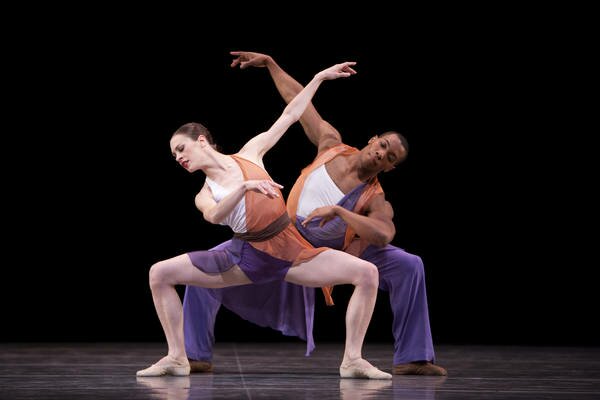 Pacific Northwest Ballet soloist Rachel Foster and corps de ballet dancer Kiyon Gaines in Twyla Tharp’s Opus 111, presented as part of ALL THARP, Nov. 5-14, 2010. Photo © Angela Sterling
Pacific Northwest Ballet soloist Rachel Foster and corps de ballet dancer Kiyon Gaines in Twyla Tharp’s Opus 111, presented as part of ALL THARP, Nov. 5-14, 2010. Photo © Angela Sterling
Brahms' String Quintet underpins Opus 111, and PNB gives you a live quintet (two violins, two violas, and cello) to enjoy. It's four movements, and you see five couples--everyone has their favorites, I'm sure, but for me the kinetic Batkhurel Bold and Carla Körbes stood out, along with a smoldering Ariana Lallone and Karel Cruz--though Tharp's mind seems equally focused on the overall picture: sides of the stage mirror each others' moves, or a movement series ripples its way through a diagonal line. I always wonder how much when you see a dance affects what you see, but something about Mark Zappone's costumes, fluttering swaths of color, made me think of the unpredictable way leaves twirl, coming down. And in any event, the dancers pirouette and spin throughout the piece, their arms almost always in motion, shoulders shrugging or pointing. They're frequently raised in a rounded "V" that near the end, when a more heel-and-toe folk-dance style arrives, becomes that fuller goblet shape you know from Russian dances, a pronouncement of hale-and-heartiness you can't help but be warmed by.
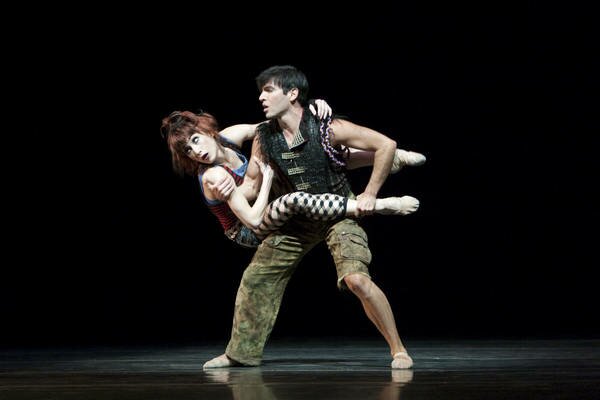 Pacific Northwest Ballet soloist Chalnessa Eames and principal dancer Jonathan Porretta in Twyla Tharp’s Afternoon Ball, presented as part of ALL THARP, Nov. 5-14, 2010. Photo © Angela Sterling
Pacific Northwest Ballet soloist Chalnessa Eames and principal dancer Jonathan Porretta in Twyla Tharp’s Afternoon Ball, presented as part of ALL THARP, Nov. 5-14, 2010. Photo © Angela Sterling
Afternoon Ball despite using Vladimir Martynov's "Autumn Ball of the Elves" for a score, has a more wintry feel to it; when she was here for the world premiere, Tharp confessed that a paraphrasing of the "The Little Matchstick Girl" had snuck into the work, except here it's a little matchstick boy, and you get the feeling it's not matchsticks he's hustling. Jonathan Porretta and Chalnessa Eames were the on-again, off-again couple last night, the kind who are alternately mad at the world (shake fist at heaven) and at each other. Olivier Wevers is the third wheel; he and Porretta share a brokeness, where Tharp has them separately glide a bit, as if on sidewalk ice, and then fall and clutch their hip. Martynov's music fuses minimalism and post-romanticism--there's a descending figure that plays in different iterations as the the couple fights and clutches at each other, Wevers diffidently trying to break in by taking up their moves--and a lushness as a serenely graceful couple (Lallone and Jeffrey Stanton) sweep in for a pas de deux. They spark an interest in Porretta's character, who watches and imitates, when he's not twitching from withdrawal. Other people have seen redemption in an apparition in white with an extravagance of train who enters on a diagonal, and takes Porretta under her arm, but I always think of her as an Ice Queen.
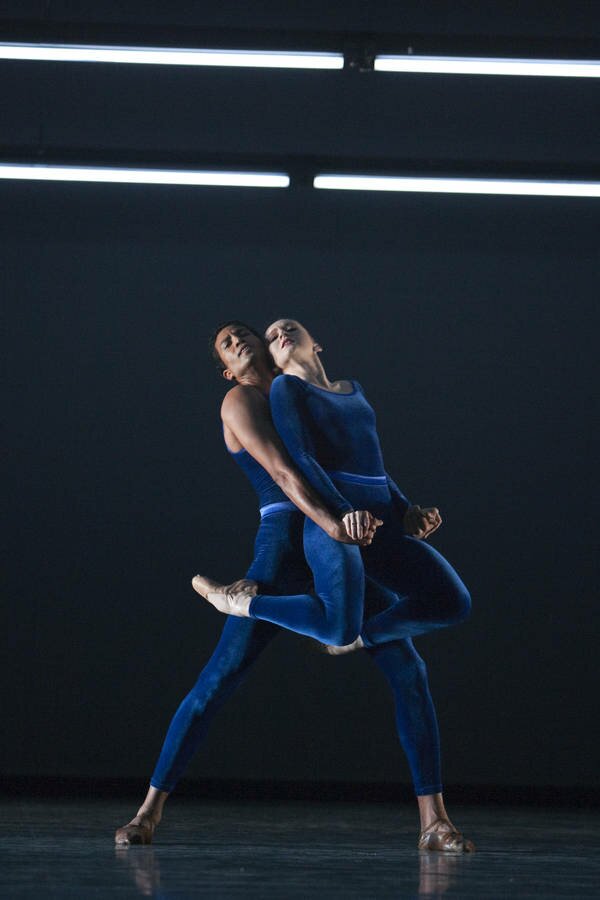 Pacific Northwest Ballet principal dancers Karel Cruz and Carla Körbes in Twyla Tharp’s Waterbaby Bagatelles, presented as part of ALL THARP, Nov. 5-14, 2010. Photo © Angela Sterling
Pacific Northwest Ballet principal dancers Karel Cruz and Carla Körbes in Twyla Tharp’s Waterbaby Bagatelles, presented as part of ALL THARP, Nov. 5-14, 2010. Photo © Angela Sterling
Despite the title, there's a genuine grandeur to Waterbaby Bagatelles in that the piece defeats any attempt to make sense of it, but its non sequiturs subtract nothing from its impact. Stringing together Anton Webern's Sehr langsam (an excerpt from Six Bagatelles), Kevin Volans' White Man Sleeps #5, John Lurie's Bella by Barlight, David Lang's The Anvil Chorus, Astor Piazzolla's Fear (from Five Tango Sensations), Mickey Hart's The Hunt, and John Adams's On the Dominant Divide, and featuring a striking series of fluorescent lights that raise and lower to create a ceiling, Tharp's work might remind you of the profusion of life around a reef--you might argue with all the wild colors and shapes, but you would ultimately lose because these things exist. There's an alpha male (Batkhurel Bold, last night) who lays some entrechat on a coterie of giggling bathing beauties (or so the bathing caps argue), some of whom, prone, kick their heels behind them in delight. When he's not preening in front, Bold almost swims through them. Kiyon Gaines appeared to similar "get a load of me" effect. In the scene pictured above, Cruz lifts Körbes, and then she pivots on his hands, as if about to launch herself forward into the water, and you desperately wish you could rewind that again and again. As with Opus 111, but perhaps hidden behind the evident fun, there's a rigorous formalism to the presentation of figures against ensembles, and as ensembles are created by addition and subtraction, as if the stage were a viewfinder, adding dancers or hiding them as you "look" right or left. Tharp persuades you this kind of precision is the essence of a kind of joie de vivre.
Thursday night was "Chai Couture, a Celebration of Jewish Fashion," organized in part by the indefatigable Cameron Levin and sponsored by Jconnect. One of the informational signs on the tables mentioned that the historic Washington Hall was the home for plays given in Ladino, for the Sephardic community of Seattle, by Leon Behar. The Eli Rosenblatt Band played Afro-Cuban music, and everyone sipped at rum drinks spiced with sriracha, mixed by Liberty's Andrew Friedman. Above are some of the styles from Butch Blum, Jarbo, Katarina Yedidim, Karen's Vintage Couture, Marge Design, and Cameron Levin. For hair, the applause goes to Reign Concept Salon (Scotty Provo), and make-up was in the capable hands of Gary Manuel Aveda Institute.
 KEXP's "Reykjavik Calling" showcase actually unites the talents of both Seattle and Icelandic musicians, but you scenesters are no doubt are familiar with Rachel Flotard and Rusty Willoughby, John Roderick, Jason Dodson, and Nathan Wade. (Really all we need is some more electronica and we have Iceland Airwaves South.)
KEXP's "Reykjavik Calling" showcase actually unites the talents of both Seattle and Icelandic musicians, but you scenesters are no doubt are familiar with Rachel Flotard and Rusty Willoughby, John Roderick, Jason Dodson, and Nathan Wade. (Really all we need is some more electronica and we have Iceland Airwaves South.)
But if you haven't been following the Icelandic Music Awards closely for the past few years, you may be wondering what's a Mugison? A Sin Fang Bous? A Lay Low? And who's this Pétur Ben character?
The beauty of this particular evening is that there's no barrier to simply showing up and finding out on your own--it's free. Doors open at 8 p.m., but depending upon how concerned you are with getting in, you may want to arrive early. (It's 21-and-over though, so don't show up earlier than your 21st birthday.)
Let's prep with a little tour down YouTube's Icelandic lane.
Mugison's "Murr Murr" won Best Song at the 2004 Icelandic Music Awards. His real name is Örn Elías Guðmundsson, and it may surprise you to know that Mugison has opened for the Queens of the Stone Age. They say it's "equal parts power rock, electrifying pop and desolate folk."
Pétur Ben's "I'll be here" begins "If I was a tree / I'd let you nest in me." Heart melted. The album that it's from, Wine For My Weakness, won Best Album at the 2006 Icelandic Music Awards.
Lay Low represents Lovísa Elísabet Sigrúnardóttir's realization that no one outside of Iceland is willing to hazard a guess at how to pronounce her name. She won Best Female Singer at the 2006 Icelandic Music Awards. Here she is covering "Jolene."
Sindri Már Sigfússon is the founder of both Seabear (folk-ish) and Sin Fang Bous (experimental). Maybe you've heard him on NPR? "Sweetness-with-bite," says Pitch-with-fork. No one can resist punning off the "fang" part.











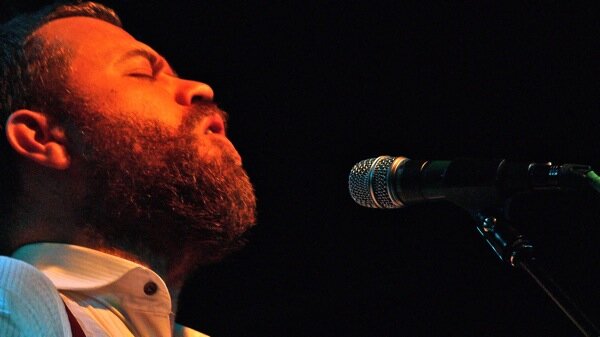
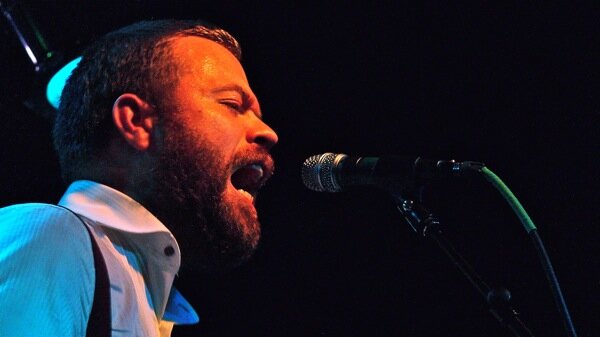
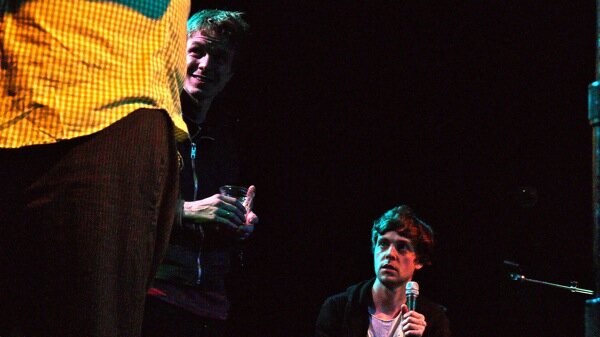
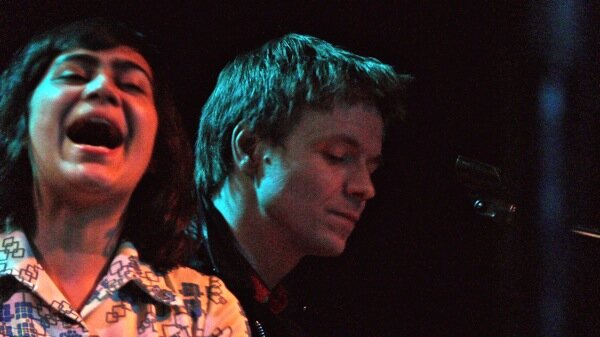


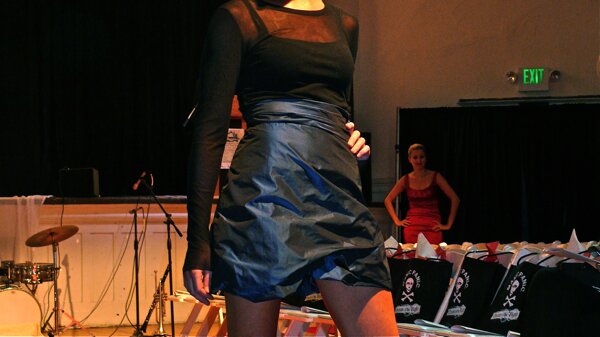
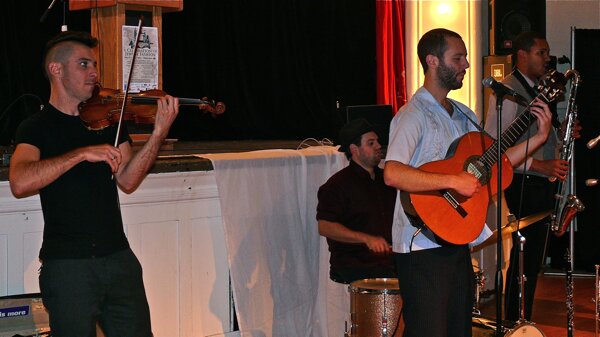


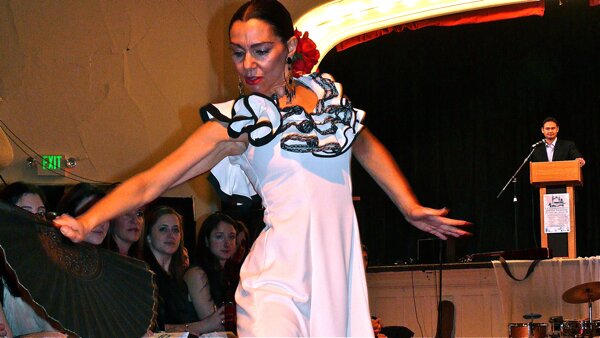
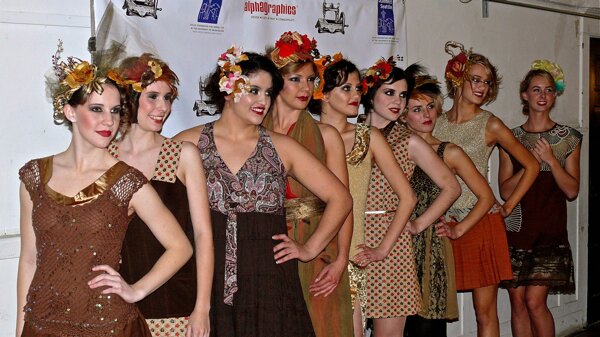


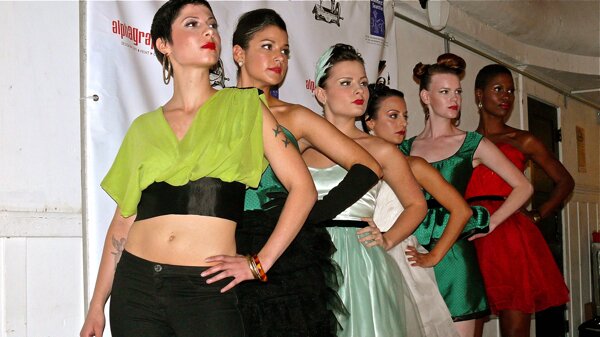
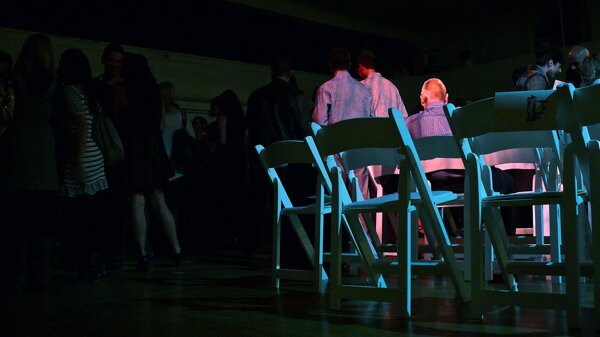
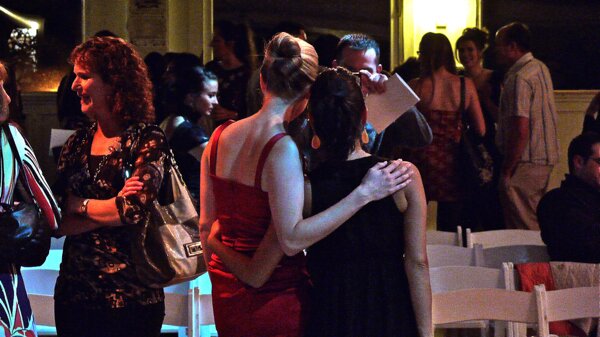
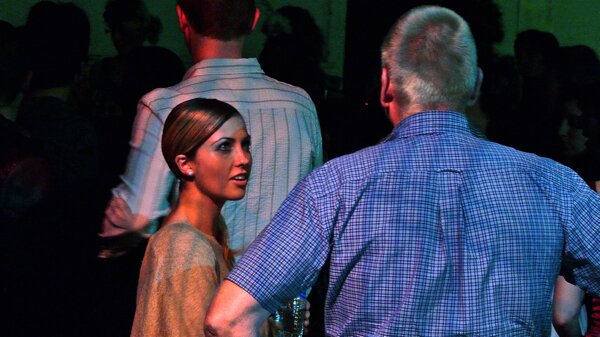
 Previous
Previous
